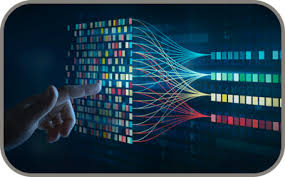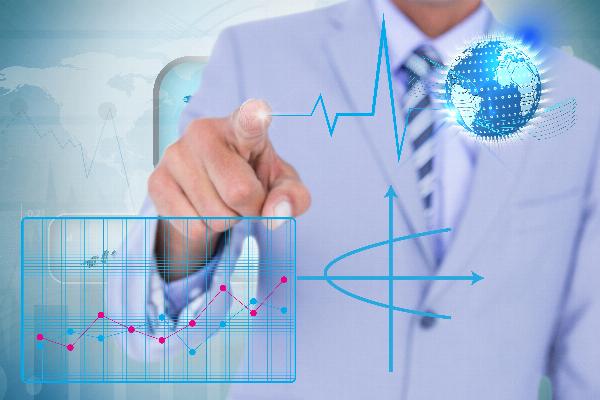 Zapier Automation – Automate Publishing. Free Your Time!
Zapier Automation – Automate Publishing. Free Your Time!
IoT and AI: The Perfect Pair for Predictive Healthcare Analytics
Written by sonalika verma » Updated on: June 17th, 2025

The rapid evolution of technology is reshaping various industries, and healthcare is no exception. Two of the most transformative forces in this sector are the Internet of Things (IoT) and Artificial Intelligence (AI). When combined, these technologies create a powerful synergy that is driving predictive healthcare analytics to new heights. This fusion of IoT and AI is not only enhancing patient care but also improving operational efficiency, leading to better outcomes for healthcare providers and patients alike.
The Role of IoT in Healthcare
IoT in healthcare refers to the network of connected devices that collect and transmit data in real-time. These devices range from wearable fitness trackers and smartwatches to advanced medical equipment like remote monitoring systems and implantable devices. The primary goal of IoT in healthcare is to gather critical patient data continuously and transmit it to healthcare providers for timely intervention.
For instance, a diabetic patient can wear a continuous glucose monitor (CGM) that tracks their blood sugar levels around the clock. This data is automatically sent to their healthcare provider, who can then adjust the patient's treatment plan as needed. Similarly, wearable heart monitors can alert doctors to abnormal heart rhythms before they lead to more severe conditions like heart attacks or strokes.
The real-time data provided by IoT devices is invaluable for healthcare professionals, enabling them to monitor patients more closely and intervene earlier. However, the sheer volume of data generated by these devices can be overwhelming. This is where AI comes into play.
How AI Enhances Predictive Healthcare Analytics
AI excels at processing vast amounts of data quickly and accurately. In healthcare, AI algorithms can analyze data from IoT devices to identify patterns, predict outcomes, and recommend interventions. This capability is particularly crucial in predictive healthcare analytics, where the goal is to anticipate health issues before they become critical.
For example, AI can analyze data from a network of IoT devices to predict which patients are at risk of developing chronic conditions like diabetes or hypertension. By identifying these patients early, healthcare providers can implement preventive measures, such as lifestyle changes or medication adjustments, to avoid the onset of the disease.
AI-powered predictive analytics can also help healthcare providers optimize resource allocation. For instance, by analyzing data from IoT devices, AI can predict which hospital departments are likely to see an influx of patients and ensure that staffing and resources are allocated accordingly. This proactive approach not only improves patient care but also reduces costs by minimizing the need for emergency interventions and hospital readmissions.
Real-World Applications of IoT and AI in Predictive Healthcare
The combination of IoT and AI is already being used in various healthcare settings with impressive results. One notable example is in remote patient monitoring (RPM). By using IoT devices to continuously monitor patients' vital signs and AI algorithms to analyze this data, healthcare providers can detect early warning signs of complications in patients with chronic diseases. This allows for timely interventions, reducing the likelihood of hospitalizations and improving patient outcomes.
Another area where IoT and AI are making a significant impact is in personalized medicine. By analyzing data from IoT devices, AI can help healthcare providers tailor treatments to individual patients based on their unique physiological characteristics. This personalized approach can lead to more effective treatments and better patient outcomes.
Challenges and Future Directions
While the combination of IoT and AI holds great promise for predictive healthcare analytics, there are challenges that must be addressed. Data privacy and security are significant concerns, as the continuous transmission of sensitive patient data increases the risk of breaches. Additionally, the integration of IoT and AI technologies into existing healthcare systems can be complex and costly.
Despite these challenges, the future of IoT in healthcare looks bright. As technology continues to advance, we can expect even more sophisticated AI algorithms and IoT devices that will further enhance predictive healthcare analytics. The ongoing development of 5G networks, for example, will enable faster and more reliable data transmission, making real-time analytics more feasible than ever before.
Conclusion
The pairing of IoT and AI is revolutionizing predictive healthcare analytics, offering healthcare providers new tools to enhance patient care and optimize operations. By leveraging the real-time data provided by IoT devices and the analytical power of AI, healthcare systems can move from reactive to proactive care, predicting health issues before they become critical. As the healthcare industry continues to embrace these technologies, the potential for improved patient outcomes and reduced costs will only grow, making IoT and AI the perfect pair for the future of healthcare.
Note: IndiBlogHub features both user-submitted and editorial content. We do not verify third-party contributions. Read our Disclaimer and Privacy Policyfor details.
Copyright © 2019-2025 IndiBlogHub.com. All rights reserved. Hosted on DigitalOcean for fast, reliable performance.









